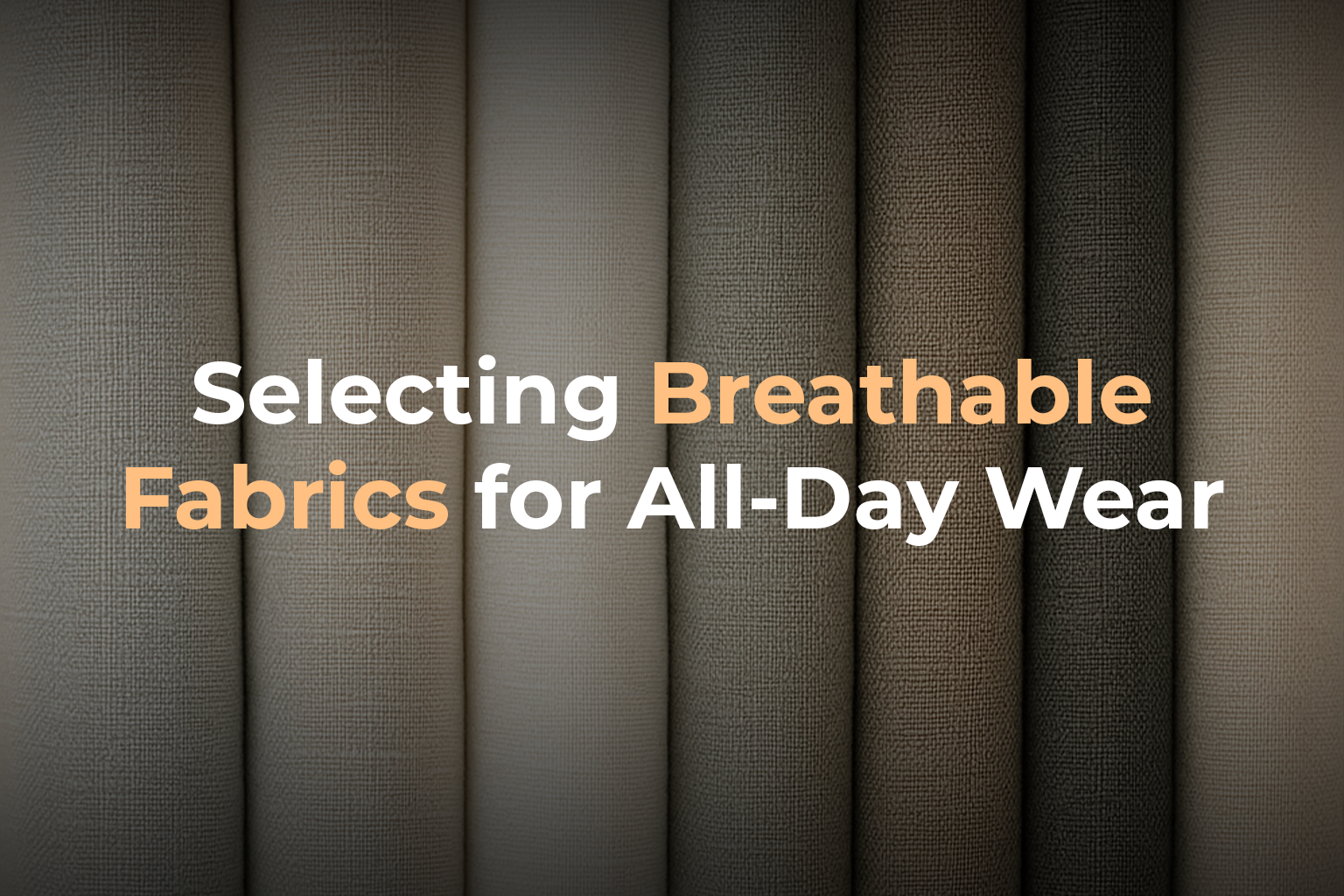There’s nothing worse than being halfway through a shift and feeling like you’re wearing a wet hessian bag. Whether you’re on your feet all day in a steamy kitchen, labouring under the blazing sun, or running between meetings, your uniform shouldn’t be working against you. It should be your number one piece of gear, helping you get the job done without a fuss.
Forget about fancy marketing spiels. Selecting breathable fabrics for all-day wear isn’t about luxury; it’s about basic comfort, health, and professionalism. A comfortable worker is a focused, safer, and more productive worker. It’s that simple.
This guide cuts through the rubbish and gives you the straight facts on what makes a top-notch uniform fabric, especially for the Aussie climate.
Why Your Uniform’s Fabric is a Big Deal (And Not Just About Comfort)
Choosing the right rag for a uniform isn’t just a matter of picking a colour that looks alright. It’s a strategic decision that impacts almost every part of a workday. Getting it wrong can have real consequences.
1. Thermoregulation and Keeping Your Cool
This is the big one. Our bodies regulate temperature primarily by sweating. A breathable fabric allows that sweat to evaporate quickly, which is what creates a cooling effect. A non-breathable fabric traps that moisture against your skin. You feel hot, soggy, and miserable. In extreme cases, this can lead to heat stress or heatstroke, a serious risk for anyone working outdoors in Australia. The right fabric actively manages moisture to keep your body in its comfort zone.
2. Health and Hygiene
A damp, warm environment trapped against your skin is a prime spot for bacteria and fungi to thrive. This can lead to skin irritations, rashes, and infections like tinea or folliculitis. Breathable fabrics that wick moisture away from the skin help keep you drier, which drastically reduces the risk of these issues. It’s basic hygiene.
3. Performance and Professionalism
Discomfort is a massive distraction. If you’re constantly readjusting a sticky shirt or feeling clammy, you’re not 100% on the job. Breathable clothing lets you forget what you’re wearing and focus on what you’re doing. Plus, a uniform that stays fresher and doesn’t develop massive sweat patches just looks more professional to clients and colleagues.
4. Durability and Value for Money
The right technical fabric isn’t just about comfort; it’s built to last. Natural breathability often comes from strong fibre structures that can withstand repeated washing and wear far better than cheap, synthetic alternatives. You might pay a bit more upfront, but if the shirt lasts twice as long, you’re ahead in the long run. It’s a better use of your dosh.
The Best Fabrics for Breathable Aussie Uniforms
Righto, let’s get into the nitty-gritty. What are you actually meant to be looking for? Here’s a breakdown of the top performers.
1. Cotton (The Classic Crowd-Pleaser)
- What it’s made of: The pure, natural fibres from the cotton plant. For uniforms, you’ll often see terms like “drill cotton” or “poplin” – these refer to the weave, not the fibre. A high-quality 100% cotton or a cotton-rich blend is the go.
- Why it’s a top choice:
- Breathability King: Cotton is inherently breathable. Its natural fibres allow ample air to circulate against your skin, making it a fantastic choice for hot and dry conditions.
- Softness and Comfort: It’s soft to the touch, gets even softer with washes, and is generally non-irritating, even for those with sensitive skin.
- Absorbency: Cotton is highly absorbent, quickly pulling moisture (sweat) from your skin.
- The Catch: Here’s the bit they don’t always tell you. While cotton is absorbent, it’s not great at drying. It holds onto that moisture like a sponge. In humid conditions (think Brisbane or Darwin), a cotton shirt can become saturated, feel heavy, and take ages to dry, leaving you feeling cold and clammy. For high-sweat activities, pure cotton can be its own worst enemy.
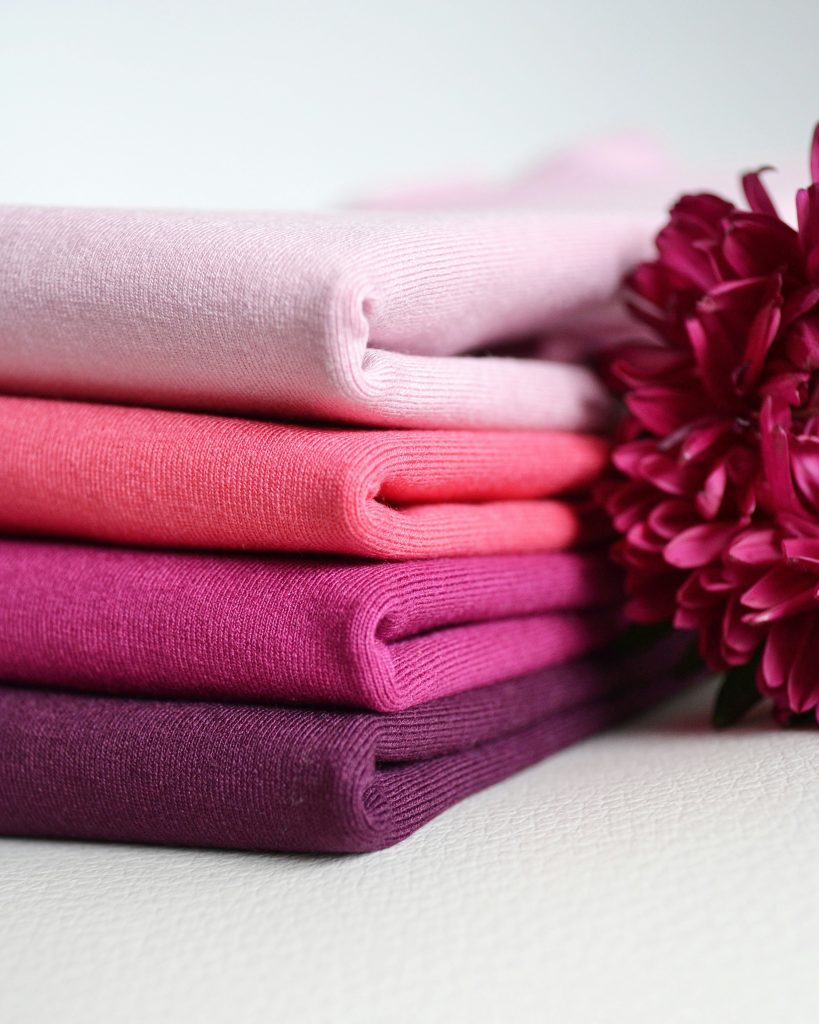
The Verdict: Brilliant for dry heat, café and retail staff, or anyone who isn’t doing high-intensity physical work. Look for a lighter weave like poplin for maximum breathability.
2. Linen (The Natural Air Conditioner)
- What it’s made of: Fibres from the flax plant. It’s one of the oldest textiles known to humans, and for good reason.
- Why it’s a top choice:
- Ultimate Breathability: Linen’s fibres are hollow, allowing for exceptional airflow. It’s widely considered the most breathable fabric on the planet. It doesn’t just let air in; it actively wicks moisture away from the body and dries incredibly quickly.
- Cool to the Touch: It has a natural ability to feel cool against the skin, providing immediate relief from the heat.
- The Catch: The classic downside is that it wrinkles if you so much as look at it. This can look a bit sloppy for a uniform if not managed. It also tends to be more expensive and can be less durable than some cotton weaves, often feeling stiffer (though it softens over time).
The Verdict: The undisputed champion for extreme, dry heat. Perfect for outdoor hospitality venues, golf clubs, or event staff where a “relaxed” look is acceptable. Often blended with cotton to reduce wrinkling and cost.
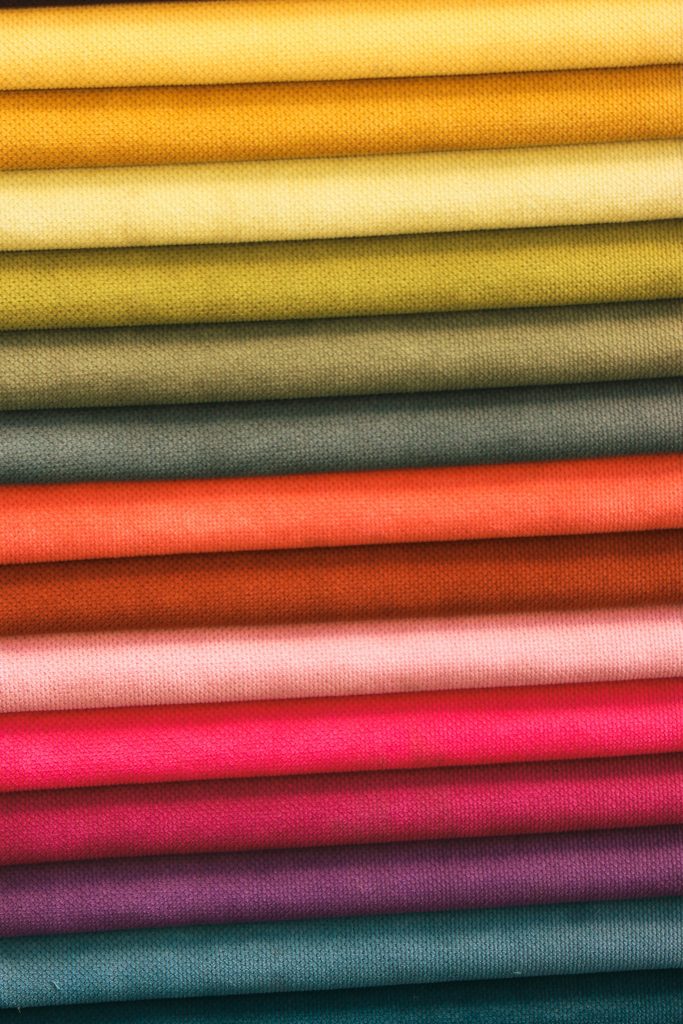
3. Merino Wool (The Smartest Fabric You’re Not Wearing)
Hold up. Wool? For summer? Trust me, forget everything you think you know about itchy, heavy jumpers. Performance Merino wool is a complete game-changer.
- What it’s made of: The fine, soft wool from Merino sheep, famously bred in Australia and New Zealand. For base layers and uniforms, it’s used in very fine gauges (measured in microns).
- Why it’s a top choice:
- All-Weather Performer: Merino is a genius fibre. It’s highly breathable and excellent at moisture-wicking, pulling sweat vapour away from your skin before it even feels wet. But its real magic is thermoregulation. The fibres respond to your body temperature, helping to keep you cool when it’s hot and warm when it’s cold. Perfect for our days that start chilly and scorch by noon.
- Odour Resistance: This is its killer feature. Merino wool can absorb a large amount of moisture vapour without feeling wet, and it naturally resists the bacteria that cause odour. You can wear a Merino shirt for multiple days in the field without it getting stinky. Seriously.
- Natural and Fire-Resistant: It’s a natural fibre with inherent fire-resistant properties, a major safety bonus for certain industries.
- The Catch: It’s more expensive than cotton or polyester. It also requires a bit more care when washing (gentle cycle, cool water) to prevent shrinkage and damage.
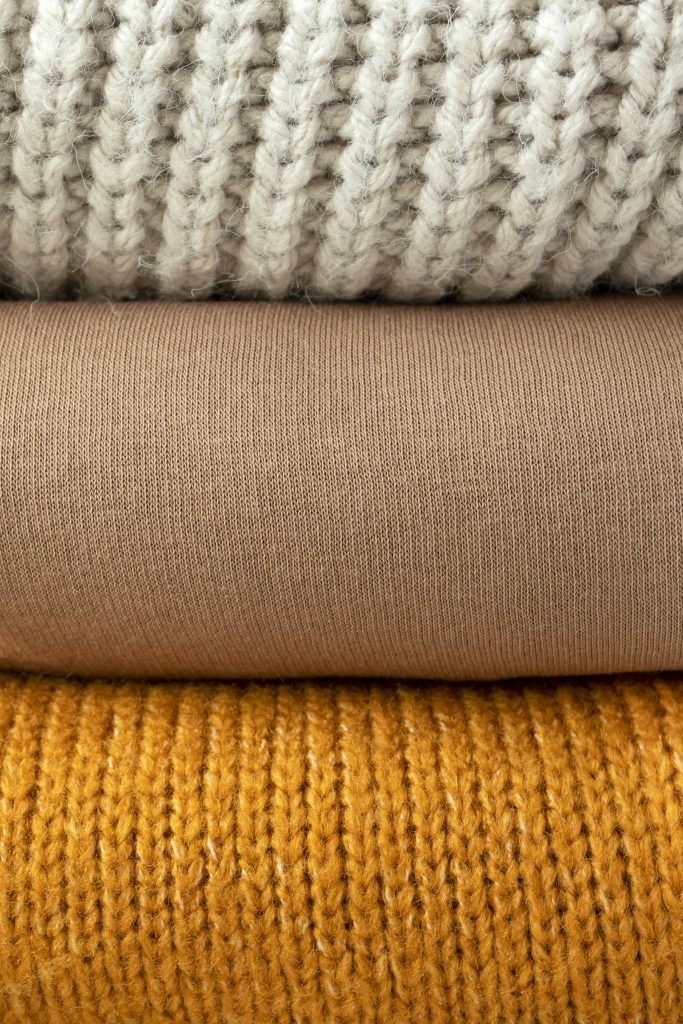
The Verdict: The ultimate technical fabric for anyone who spends long days in variable conditions—from tradies and farmers to chefs and emergency service workers. It’s a premium investment in comfort.
4. Polyester & Technical Blends (The Modern Workhorse)
- What it’s made of: Man-made synthetic polymers derived from petroleum. On its own, cheap polyester is the enemy of breathability—it’s basically wearing a plastic bag. However, when engineered for performance, it becomes something else entirely.
- Why it’s a top choice (when done right):
- Moisture-Wicking: Performance polyester is designed to wick. It pulls moisture from your skin to the outer surface of the fabric where it can evaporate rapidly. It keeps you drier than cotton during high-exertion activities.
- Durability: Polyester fibres are incredibly strong and resistant to abrasion, stretching, and shrinking. A good poly-blend uniform will withstand an absolute thrashing and look new for years.
- Quick-Drying: It dries in a flash, which is why it’s the base for most sportswear and workout gear.
- The Catch: Cheap polyester is hot, sticky, and prone to holding onto body odour. The key is in the quality and the blend. Look for terms like “moisture-wicking,” “performance,” or “technical” polyester. It’s often blended with natural fibres (like cotton) or treated with anti-odour technologies to overcome its weaknesses.
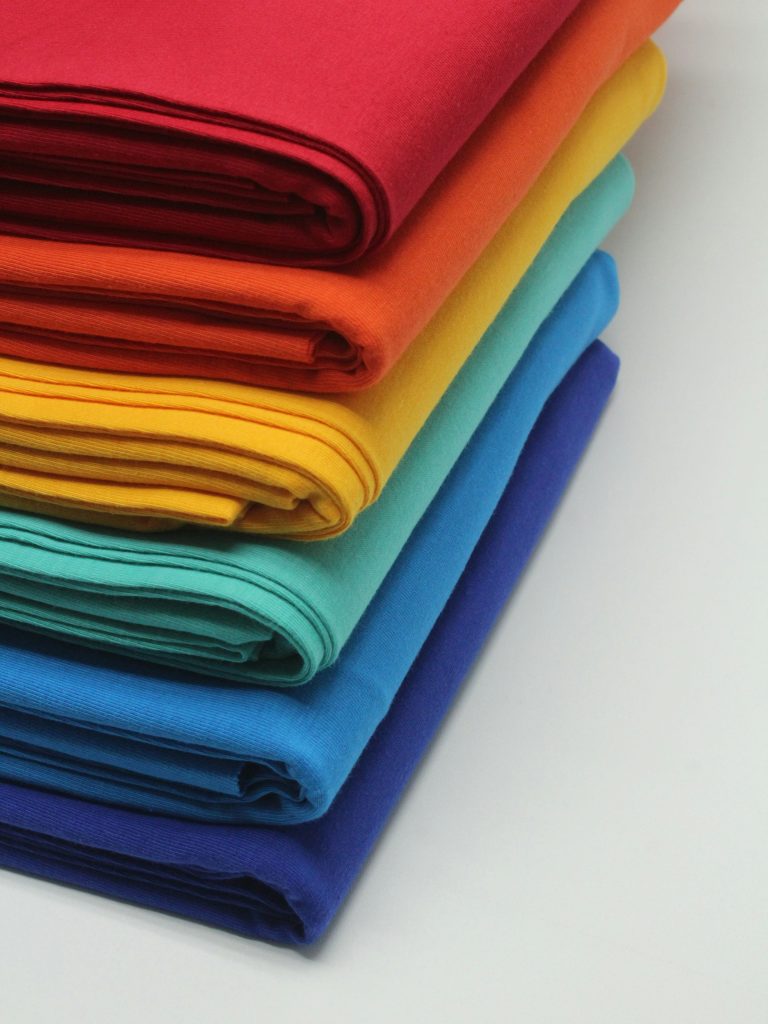
The Verdict: Don’t write it off. High-performance polyester or poly-cotton blends are the practical, durable, and effective choice for active jobs like logistics, manufacturing, and healthcare. Brands like Under Armour or KingGee’s Tech styles have built an entire industry on it.
We design uniforms that speak louder than logos — because every seam, shade, and shape should say this is who we are. Connect with VMA Uniforms and let’s sketch your story together.
The Blends: Where the Magic Happens
Often, the best uniform fabric isn’t a single material but a clever blend that takes the best qualities of each.
- Poly-Cotton (e.g., 65% Polyester / 35% Cotton): This is the most common uniform fabric for a reason. It combines the softness and breathability of cotton with the durability, wrinkle-resistance, and quick-drying properties of polyester. It’s a tough, cost-effective, and practical workhorse for almost any job.
- Cotton-Linen: Blends the unparalleled coolness of linen with the softness and cost-effectiveness of cotton. It wrinkles less than pure linen and is more affordable.
- Technical Polyester Blends: Mixed with other synthetics like elastane (for stretch) or treated with permanent anti-odour finishes. This is top-shelf performance gear for the most demanding environments.
What to Look for on the Label:
Don’t just grab the first shirt off the rack. Check the label and look for these keywords:
- Breathable: Allows air to circulate.
- Moisture-Wicking: Pulls sweat away from the skin to evaporate.
- Quick-Dry: Does what it says on the tin.
- Oeko-Tex Certified: Means the fabric is tested and free from harmful levels of over 100 toxic substances. Good for your skin and the environment.
- UPF Rating (Ultraviolet Protection Factor): Essential for outdoor work. A UPF of 50+ blocks out over 98% of UV radiation.
The Bottom Line
Selecting breathable fabrics for all-day wear is one of the smartest investments a business—or an individual—can make. It’s not a fluffy bonus; it’s central to wellbeing and performance.
- For dry heat and low-intensity work, you can’t go wrong with a high-quality cotton.
- For ultimate breathability in scorching conditions and a relaxed look, linen is your best mate.
- For variable conditions, high exertion, and odour control, Merino wool is the unbeatable technical choice.
- For durability, practicality, and high-performance wicking, a technical polyester blend is the hard-wearing solution.
Think about your specific day, your environment, and what you ask of your clothes. Your uniform is your daily armour. Choose one that lets you breathe easy and crack on with the job.

